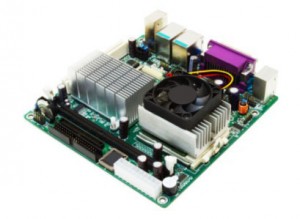
Handle It: Wide-Temperature Motherboards and Embedded Computing
Blog
 The industrial computing world has to react to the needs of its customers, buyers who range from high level database creators to manufacturing designers. Such varying kinds of use-cases can mean wildly different environments that must be endured by devices that need to keep operating as long and as effectively as possible. Typical commercial products may be able to live up to the less intensive tasks, but when it comes to the demands made of most industrial computers, a more rugged alternative is key.
The industrial computing world has to react to the needs of its customers, buyers who range from high level database creators to manufacturing designers. Such varying kinds of use-cases can mean wildly different environments that must be endured by devices that need to keep operating as long and as effectively as possible. Typical commercial products may be able to live up to the less intensive tasks, but when it comes to the demands made of most industrial computers, a more rugged alternative is key.
This is where a wide-temperature motherboard can save the day. Much like its RAM counterpart, this industrial component fills a particular niche of a full featured motherboard that works in a rugged environment. Understanding this component’s capability and how to utilize its strengths is important in determining who most needs this product.
What Do Wide-Temperature Motherboards Provide?
A wide-temperature motherboard gives designers the peace of mind that no matter what load the use-case brings, it will continue to operate at peak efficiency. Most consumer electronics keep their operative temperature within 0° to 60°. However, wide-temperature electronics can push these limits even further, reaching anywhere from -40° to +120°. We need to remember that both heat and cold can be damaging to productivity, increasing the need for wide-temperature motherboards that can handle either situation.
Wide-Temperature Motherboards: Other Factors to Consider
Some manufacturers of wide-temperature motherboards will include some interesting features to provide the end-user with the best experience. Certain APIs can be made available to designers, so they can write their own applications to monitor the hardware’s operating temperature—or, certain hardware companies provide a monitoring utility that can be installed.
These programs do a lot more than surface real-time temperatures; they put fan and cooling controls in the end-user’s hands, allowing them to make the necessary optimum call when needed. Being able to constantly observe these statistics could mean the difference between peak efficiency and a broken system.
 Brian Luckman is the President of New Era Electronics. He has worked in the industrial OEM market for over 25 years, serving a variety of different industries, gaining a strong reputation for his expertise and a thorough understanding of how to properly service OEM customers. In 2000 he began New Era Electronics and the company continues to grow. He’s a husband and father and enjoys exploring the outdoors.
Brian Luckman is the President of New Era Electronics. He has worked in the industrial OEM market for over 25 years, serving a variety of different industries, gaining a strong reputation for his expertise and a thorough understanding of how to properly service OEM customers. In 2000 he began New Era Electronics and the company continues to grow. He’s a husband and father and enjoys exploring the outdoors.
Creative Commons Attribution: Permission is granted to repost this article in its entirety with credit to New Era Electronics and a clickable link back to this page.




